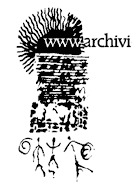

|
Home Page |

|
Go Back |

|
Versione italiana |

|
Introduction |

|
Proposal for listening |

|
Volume I |

|
Volume II |

|
Volume III |

|
Bibliography |

|
Credits |

|
Distribution |

Introduction. A project for an archive of the oral memory.
To Restore, to conserve, to catalogue; these are the imperatives which characterise the final part of this century, the first in the history of humanity to have succeeded in the fantastic enterprise of fixing the
present and making it a serial by way of mechanical means of reproduction.
In this way, for the first time, the moment that eludes, may be reproduced an infinite number of times. Almost the dream of eternity. However we discover quickly that this is not so: even this present, images in movement, and voices, can disappear forever and return to oblivion if we do not intervene in time on the perishable material concerned, be it magnetic tape or
celluloid.
Therefore the mutiplication everywhere to save this memory: the alarm for a possible imminent loss of masterpices of cinema prompted a series of initiatives, the old films are kept in climatized rooms, tens of metres underground, the wax cylinders in which the first musical reproductions were recorded are recuperated, the materials which guarantee optimum conservation on original media are studied, things are reversed and
masterized....
But what use would all this have if we do not proceed with the cataloguing of this infinite quantity of data about our memory, and our history. It would be a formless mass unable to comunicate its content. In other words, those of St. Augustin, the baggage of the century oppresses us pleasantly, as happens in dreams.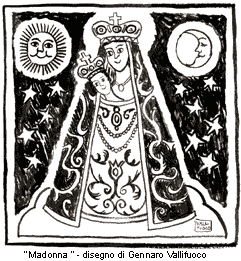
In Sardinia these efforts are even more important as a result of the particular events which haver characterised our recent history: in the 1960's and 70's, on one side a methodic operation of removal of our own past and culture was carried out in favour of the new urban culture, on the other side a series of research projects, of scientific and amateur types, were initiated. These permitted the saving of a large part of the memory which otherwise would quickly have been lost definitively.
Today we must acknowledge those who in those years went against the current, dedicating themselves to the safeguarding of the most diverse aspects of our cultural heritage with passion and methodology. These are the two gifts which are necessary: the first because it is the motor which pushes one beyond the mere matter of renumeration or immediate gratification, the second is important because anyone gathering testimonials and documents without a precise project risks having worked in vain.
It was a stoke of luck to have been able to accede to the funds conserved at the Department of History of Popular Traditions in the University of Cagliari and to have finalised this projects thanks to the help and co-operation of the lecturers Enrica Delitala and Chiarella Addari Rapallo and the financial contribution of the council for Public Education of the Autonomous Region of Sardinia.
The first result of this project, the compact disc racconti popolari del
Logudoro, was received with great favour both by the schools of the island (to whom it was distributed free of charge), and the mixed public composed of researchers, theatre operators, people who are simply interested in the matter, even from outside
Sardinia.
The selection of stories published on this CD is the most visible result of a programme that includes the re-recording from analogic to digital of the original documents held in the above department and the complete cataloguing of the re-recorded material with an analysis of the individual tracks and with the aim of entering the data into the Net so as to permit consultation even from a distance.
This work is inserted in a general climate that seems to translate the anxiety of century that is coming to an end, and from this the worry of retaining the images and voices with which our memory is anchored. The mechanical means of reproduction perhaps corrodes our capacity to memorise? This may be so. However it most certainly helps recuperate that which was already forgotten. These CDs provide an exact version of popular tales, not ones which transcription has altered. It gives that which has been pronounced by the narrator, even though the conditions may not be totally natural, as they are told before a recorder. The most faithful transcription could not reproduce the exact tone of voice, the intonation of the phrase, the rhythm of the sentence. Even less would it have been able to hand down the timbre of that particular voice or the surrounding sounds, and it is precisely these that open a window in the memory, producing something of the effect of Proust's madeleine. These are sounds which we have forgotten, sound which send us back years in a single instant, sounds that lead us back to the natural setting of the story-teller, sounds that not even a compact disc is able to reproduce: the circle around the hearth, the stone bench, the evening, next to the front door of the house, a seat in the terrace to sit next to Grandmother..... one sat in this way, next to the narrator, open to everything, even to hearing our favourite tale changed continuously. And this openness was also on the part of the narrator: he or she would sit there, without hurrying, carefully answering every request, regardless of whether they were explicitly formulated or not.
In this way, that which the cold digital means can reproduce of this magic circle is but a pale shadow. The desire is, however, that these discs may act as a stimulus to revive the art of the narrator, an extra reason to start listening to the infinite varieties of life, to the multiple and unpredictable semblances of reality, to learn to listen to my truth and those of the others.
Enedina Sanna
Archivi del Sud
The magic circle of narration: a proposal for listening in the elementary school
The oral tale brings to the world a first form of creativity which fits the infant's mind, stimulates analogies and provides the first copies with which to develop a more complex view of the world
and of creativity.
When listening to this CD with the pupils of the elementary school the creation of a suggestive atmosphere is advised, where the voice that tells the story opens and closes the magic circle of the narrator. In this way the capacity to listen will be developed from within the sound patterns of the tale, the rhythm and phono-symbolic effects will be gathered and these factors will contribute in an important way towards the comprehension and pleasure of the listening. No translation will be given beforehand, to the contrary the language will be left provoke a deeper and longer-lasting impression in the child as it is listened to as sound. Words generate images, sensations, analogies. The words used to tell a story, to describe a person or some sentiments, do not adhere totally to those people or sentiments: words attempt to describe facts, sentiments and situations, but leave the task of completion and refinishing to the listener. It is precisely this incomplete nature of language which allows the child who listens to a story to have an area for his or her own imagination.
At this point, even if the story is not understood completely, the children are encouraged to re-tell it, inventing where they have not been able to translate. This approach permits the integration of expressive-creative activity with that which is cognitive, it gives them the opportunity to translate images from a symbolic language and opens the children to the possibility of discovering, understanding and appreciating the role of their own traditional culture. The heritage of the popular tale must be recuperated and re-evaluated in that which is still relevant and valid.
The fable alludes to the mystery of the character and to metamorphisis: weakness is transformed into strength, oppression becomes crushed by the oppressed, poverty is transformed into richness, ugliness into beauty, hunger into abundance. The popular tale has been for centuries an initiation into life, regulated to the social and cultural conditions of the society of the farmer and craftsman. This function would appear to be still valid in modern society even though the modern fable elaborates new characters, environments and symbols which correspond to the fascinating and self-contradictory technological world of mass media.
We are aware of the fact that the present and future generations face and will face televised and interactive tales - these innovations should not, however, lead to the loss of the habit of the oral tale.
An attempt has been made to record the magic of words in these CDs: In our voce everything becomes fable, because in it nothing which is real can happen (R.M.
Rilke).
Marina Favata
Archivi del Sud
![]()
Bibliographic notes
For a general view of the subject, for a history of the studies of fairy tales, for analysis of tales the following are essential: S.THOMPSON, La fiaba nella tradizione popolare, Milano, Il Saggiatore 1967; V. PROPP, Morfologia della fiaba, Torino, Einaudi 1966; V. PROPP, Le radici storiche dei racconti di fate, Torino, Boringhieri 1972; M. LÜTHI, La fiaba popolare europea. Forma e natura, Milano, Mursia 1992.
Of popular character but useful for a first approach: V. PISANTY, Leggere la fiaba, Milano, Bompiani 1993.
For the relationship between oral and writing, for the distinction between popular fable and literary fable, for the linguistic and stylistic aspects, view the recent volumes
C. LAVINIO, La magia della fiaba tra oralità e scrittura, Firenze, La Nuova Italia 1993 e G. CERINA, Cinque saggi nel fiabesco, Cagliari, Cuec 1992
and the bibliography cited within.
For the inquiry promoted by the Discoteca di Stato see A. CIRESE e L. SERAFINI, Tradizioni orali non cantate, Roma, Discoteca di Stato 1975.
For the classification and identification of international types and motifs A. AARNE e S. THOMPSON, The types of the folktale, Helsinki, FFC 1961; S. THOMPSON, Motif-index of folk Literature, Bloomington, Indiana University Press 1955-58.
Amongst the collections of Sardinian texts see: C. ADDARI RAPALLO, Il bandito pentito e altri racconti popolari sardi, Sassari, Edes 1977; E. DELITALA, Fiabe e leggende nelle tradizioni popolari della Sardegna, Sassari, 2D Editrice Mediterranea 1985; F. ENNA, Sos contos de foghile, Sassari, Gallizzi 1984; Fiabe sarde a cura di F. ENNA e S. MANNUZZU, Milano, Mondadori 1991.
For a Sardinian bibiography until the 1960's: E. DELITALA, Gli studi sulla narrativa tradizionale sarda, Sassari, Gallizzi 1970.
For an updated bibliography and studies on the various aspects of popular Sardinian narration see the journal..
"BRADS", Cagliari, Facoltà di Lettere 1966-1993.
For indications of methodology of collection and specific questionnaires: E. DELITALA, Come fare ricerca sul campo, Sassari, Edes 1992.
![]()
Credits
I would like to express my thanks to all who in these years have believed in this project and above all the lecturers of the University of Cagliari, Enrica Delitala and Chiarella Addari Rapallo, together with the students who under their guidance have conducted the inquiries which have left much precious material. Furthermore I would like to thank the members of the association Archivi del Sud for their punctual and passionate help, especially Marina Favata and Antonella Sanna; for sound restoration Enzo Favata and his co-workers; for financial support the Council for Public Education of the Autonomous Region of Sardinia, which has permitted us to finish our work without interruption. Finally our gratitude to the story-tellers, those who we have immortalised here, in these discs, those who remain fixed in our memories with their voices as a personal memory for every one of us.
Enedina Sanna
Contami unu Contu. Racconti popolari della Sardegna
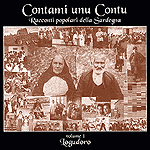
|
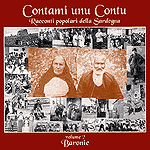
|
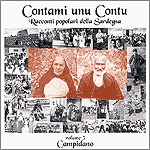
|
In collaboration with the Chair for History of Popular Traditions of the University of Cagliari
With the contribution of the Autonomous Region of Sardinia - Council for Public Education.
Directors of Project:
Scientific consultancy: Enrica Delitala and Chiarella Addari Rapallo - University of Cagliari.
Sound restoration: Enzo Favata.
General Coordination: Enedina Sanna
Distribution
For the distribution of the various volumes of Contami unu Contu
contact:
Associazione Culturale Archivi del Sud
Via degli Orti, 41 - 07041 Alghero (SS)
Tel./Fax +39-079986585
E-mail: archividelsud@tiscalinet.it
Or
click here
![]() Copyright (c) 1990-2000 Archivi del Sud - All rights reserved
Copyright (c) 1990-2000 Archivi del Sud - All rights reserved